- Register
- Log in to Tune-In
- Wishlist (0)
-
Shopping cart
(0)
You have no items in your shopping cart.
Beatles News

They had the whole music world waiting for what they’d do next. Yet amidst those myriad expectations, it’s safe to say that The Beatles’ release of the single “Strawberry Fields Forever”/”Penny Lane” in 1967 was something that no one saw, or heard, coming.
These two songs represented just how far the band was pushing the limits in the studio, since they no longer had to worry about touring. And it was just the first taste of the incredible music that the group was about to foist upon the world in that magical year.
The Beatles’ momentous decision to quit touring shook up their fandom. Was it a sign that they were considering breaking up? Even George Harrison wondered about their future as the band left their final gig in San Francisco in August 1966.
Once the shock of the decision wore off, and they had taken some time away, The Beatles filed back into Abbey Road studios in November 1966 to get back to work. They had some vague ideas about what they wanted to do once they started. And they had written a few songs that they wanted to try.
There was some talk about doing an album where all the songs would be based on the childhood experiences of the g details

On this day (July 1), the Beatles’ eighth studio album, Sgt. Pepper’s Lonely Hearts Club Band went to No. 1 on the Billboard 200 albums chart. It would retain the top spot for 15 consecutive weeks, making it the Fab Four’s most successful album in the United States. More than a massive chart success, the album introduced the world to a new incarnation of the iconic band and became the soundtrack to the rising hippie culture.
The mid-1960s saw the Beatles drifting away from the sound and image that made throngs of teenagers scream until they fainted. They were aging and, more importantly, maturing as musicians. As a result, they wanted to expand their musical horizons. This made playing their new material, specifically songs from Revolver, almost impossible. After a lackluster world tour, Liverpool’s favorite sons chose to retire from touring and spend some time apart.
According to a Billboard feature on the album, members of the Beatles took a three-month break. George Harrison traveled to India on a spiritual retreat, John Lennon dipped his toes into the world of film, and Paul McCartney took a trip to Africa. When they came back together, they were refreshed and full of new ideas.
details
Near the end of John Lennon‘s life, all signs pointed to him never playing a Beatles song live again. He wasn’t frequently on the road as a general rule. The likelihood that he would revisit his old material amid one of his rare appearances was close to zero. Luckily for Beatles fans, Lennon did manage to sneak in one final live performance of a Beatles classic before he was murdered. Find out which Beatles song bookended Lennon’s career below.
One of Lennon’s last performances saw him play alongside Elton John at Madison Square Garden. It seems that only the consequences of a bet (more on that later) could bring Lennon back on stage after so many reclusive years.
Amid the set, Lennon and John decided to play a rendition of “I Saw Her Standing There.” This early Beatles cut is among their most beloved songs. It is indicative of the writing style of Lennon and Paul McCartney. It was one of the first songs they penned together.
“I wrote it with John in the front parlour of my house in 20 Forthlin Road, Allerton,” McCartney once said. “We sagged off school and wrote it on guitars and a little bit on the piano that I had there.”
“We we details

Here’s one for Sir Paul McCartney fans: a house near his long-term St John’s Wood home is for sale with Robert Irving Burns for £3.6 million.
McCartney bought his house on Cavendish Avenue for £40,000 in 1965, embarking on a months-long refurbishment and finally moving in the following year. It has been his London home since.
Cavendish Avenue is one of the capital’s most in-demand streets, where houses rarely come up for sale. According to the Land Registry, there have only been 20 property transactions on the road in the last 30 years.
The average sold price of houses on the road in the last five years is £6.925 million, according to the Land Registry’s figures.
To Lee Koffman, director of Robert Irving Burns, the £3.6 million house now for sale represents an opportunity to “buy the worst house on the best street,” as the old estate agent’s adage goes.
“Cavendish Avenue is the best road in St John’s Wood,” says Koffman. “The houses on the street are few and far between.
“They’re very rare because once people buy there, they stay on the road for decades and don’t move out, b details
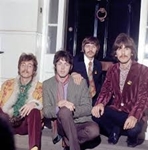
The Beatles, known for stirring the pot, certainly did so when John Lennon's bold statement in 1966 that they were "more popular than Jesus" sparked outrage among American Christians, contributing to the band’s cessation of touring later that year.
Their knack for pushing boundaries also saw several of their songs slapped with bans by radio stations. The BBC censored 'A Day in the Life' over alleged drug references, while 'The Ballad of John and Yoko' faced bans from some US stations for its mention of Christ.
The trend of controversy carried on even after John, Paul McCartney, George Harrison, and Ringo Starr went on to solo endeavours post-1970. For instance, the ECHO delved into how Paul McCartney and Wings' 'Hi, Hi, Hi' was shunned by the BBC for perceived nods to sex and drugs.
John's Beatles legacy includes one particularly infamous tune, 'Happiness Is a Warm Gun', penned by him in 1968 and presented under the Lennon-McCartney songwriting banner like all compositions from the duo for the Fab Four.
The title, which kick-started the song, was lifted straight from the May 1968 issue of American Rifleman magazine, where an article by Warren W. Herlihy depicted his experience t details
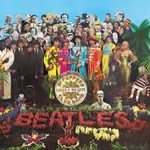
The Beatles hit #1 with their eighth studio album Sgt. Pepper’s Lonely Hearts Club Band, which featured such classic Beatles tunes as the title track, “With a Little Help From My Friends,” “Lucy in the Sky with Diamonds,” “When I’m Sixty Four,” “Lovely Rita” and “A Day in the Life.”
Sgt. Pepper’s was The Beatles eighth #1 album and spent 15 weeks at the top of the charts in the U.S. It went on to win the Grammy for album of the year, the first rock album to ever win the top award, and was inducted into the National Recording Registry by the Library of Congress in 2003.
A critical and commercial success, Sgt. Pepper’s has been certified 11-times Platinum by the RIAA.
Source: everettpost.com/ABC News
details
In the emotional aftermath of John Lennon's 1980 assassination, a then-17-year-old Julian Lennon was thrust into a world of grief, confusion, and suspicion.
Julian, Lennon’s son from his first marriage to Cynthia Lennon, had been living quietly in the U.K. when Yoko Ono summoned him to the Dakota, the Manhattan home she shared with John. The purpose, at first, seemed rooted in grief. But what unfolded was far more complicated.
“She was falling apart,” Julian recalled of Ono. “I had to be strong for myself — and strong for her. She hadn’t even told Sean [John and Yoko’s son] that dad had died yet. She asked me how she should break the news.”
But things soon took a tense turn. According to Julian, Ono grew suspicious when a guitar that had belonged to John was anonymously delivered to him in England. That delivery, she believed, might be linked to the theft of some of Lennon’s missing diaries.
“Shortly after Dad died, Yoko found out about the guitar being given to me and sent someone over from New York so I could sign for it,” Julian said. He continued: “Then I was flown to New York and asked to sign a confessio details
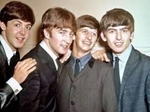
The Beatles' rise to global stardom was meteoric, with their fame skyrocketing in under a year and a half following the UK release of 'Love Me Do' in October 1962. By February 1964, an astonishing 73 million viewers in America were glued to their screens watching the Fab Four on the Ed Sullivan Show as 'I Want to Hold Your Hand' swept the nation.
This track not only marked their first chart-topper in the States but also kicked off a period of unrivaled chart success for the Liverpool lads. After a seven-week reign, 'I Want to Hold Your Hand' handed over the number one spot to 'She Loves You', and this was just the beginning—four more hits soared to the top within six months.
Paul McCartney, George Harrison, John Lennon, and Ringo Starr, four young men from Liverpool, had become the most recognizable faces on the planet, and it all happened at breakneck speed. Adjusting to such intense fame wasn't a walk in the park for them.
Lennon, in particular, found the transition challenging, a struggle that influenced his songwriting. Reflecting on those times in a 1980 Playboy interview, he confessed: "The whole Beatles thing was just beyond comprehension. I was subconsciously crying out for help".
details

Despite being the biggest stars in the world, The Beatles made the decision to stop touring in 1966. The band were fatigued after years on the road and playing live shows to huge, expectant crowds and instead wanted to devote time to working on their innovative ideas in the studio.
That decision led to a run of boundary-pushing albums, including 1967's 'Sgt Pepper's Lonely Hearts Club Band' and 'The White Album' the following year. The Beatles' final organised gig took place on August 29, 1966, at San Francisco's Candlestick Park.
Other than an unannounced rooftop concert at their Apple Corps headquarters in London on January 30, 1969, the four did not play live as a band again. The 'Get Back' sessions in 1968 and 1969, which became the album 'Let it Be', were meant to inspire an all-conquering return to being a live band - on Paul McCartney's suggestion - but The Beatles' split in 1970 meant it did not materialise.
As such, when Paul, John Lennon, Ringo Starr and George Harrison went their separate ways and took their solo projects on the road, they had not played live for some time. Paul had released two solo albums - 'McCartney' and 'Ram' before he formed the band Wings in 1971. details
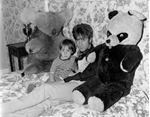
Hey Jude was a huge hit for the Beatles, a classic song that has become part of the very fabric of pop culture.
However, for Julian Lennon, this track sometimes brings more annoyance than comfort. Julian, the son of John Lennon and his first wife Cynthia, has confessed that despite the song's heartfelt message, listening to the 1968 chart-topper isn't always a pleasant experience.
Hey Jude was written by Paul McCartney following the collapse of John and Cynthia's marriage. "It was 'Hey Jules' at first, but that didn't quite sit well rhythmically," Julian recounted of the song. "'Hey Jude' was a better interpretation."
In a candid chat with Esquire in 2023, Julian delved into his complex feelings about Hey Jude. He revealed, "Paul wrote it to console Mum, and also to console me."
Paul, who maintained a close bond with Cynthia and Julian during those turbulent times, confirmed that the song was written as a supportive gesture for a young Julien whose domestic life was upended by his father's romance with Yoko Ono.
Despite the fact that countless fans have found solace and inspiration in the uplifting lyrics, Julian concedes that its presence everywhere — on the radio, at weddings, details
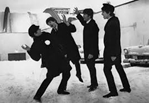
Paul McCartney and John Lennon were the driving creative force behind The Beatles. The majority of the band's songs were written by the two and credited to Lennon-McCartney, irrespective of how collaborative the writing process was.
In the early days, John and Paul wrote together. But as the 1960s went on and creative differences between them came to the fore, they often wrote independently before presenting songs to one another for final tweaks. They began writing together after meeting at a Woolton church fete in 1957. Their first works were composed at Paul's childhood home on Forthlin Road in Allerton and at John's aunt Mimi's house on Menlove Avenue. They wrote hit after hit until The Beatles went their separate ways in 1970.
Every song written by John and Paul for The Beatles received that joint credit.
About their partnership, Music and Musicians magazine's Wilfred Mellors wrote in 1972: "Opposite poles generate electricity: between John and Paul the sparks flew. John's fiery iconoclasm was tempered by Paul's lyrical grace, while Paul's wide-eyed charm was toughened by John's resilience."
In a 1980 interview with Playboy, John said about working with Paul: "(He) provided a details

George Harrison's childhood home has been transformed into an Airbnb rental and a house museum.
The Beatles star's former family home in Liverpool was recently acquired at auction by Ken Lambert and he's now turning the property into a destination for fans of the band. Lambert, 48 - who is in the business of commercial construction - told the New York Post newspaper: "Once I realised I was the winner, it was pretty shocking.
"I really started to think about what I was going to do with the property. I’m not a wealthy individual. It’s not like I go around buying up properties. I’m a Beatles fan, yes, but I am a big George Harrison fan specifically."
Lambert bought the property for £171 000 (R3.32 million) and is only the third person to have owned the home since the Harrison family.
Here is the property as it was marketed by Omega Auctions: The property owner ultimately decided to transform the landmark into an Airbnb and a house museum for weekly tours. Lambert took the decision after observing the success of house museums dedicated to John Lennon and Sir Paul McCartney.
"I think it was a shame that George’s house had no releva details
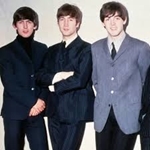
One song from the renowned Beatles repertoire is now being praised by fans as an overlooked masterpiece.
There's no denying that the illustrious foursome, consisting of John Lennon, Paul McCartney, George Harrison and Ringo Starr, crafted a plethora of timeless hits. Nonetheless, ardent fans concur that a particular tune seems to have slipped under the radar.
On the Reddit platform, specifically within the r/Beatles community, fans collectively agree that the White Album, launched in 1968, houses the Beatles' most underappreciated gem. This iconic album boasts an array of Fab Four classics, including While My Guitar Gently Weeps, Back in the U.S.S.R., and Dear Prudence.
However, fans have lavished praise on a lesser-known track, hailing it as the group's "most underrated" creation. Devotees have drawn parallels between this song and an "indie folk" track, deeming it "ahead of its time" and invoking parallels with the likes of Bob Dylan, Phoebe Bridgers and Big Thief.
Source; irishstar.com/Ellie Hook
details
In 1962, The Beatles had the opportunity to work with the highly talented and revered music producer George Martin. At first, Martin didn’t view the collaboration as particularly promising. However, that would of course change, as The Beatles were the most successful and lucrative band George Martin ever produced. Regardless, what seemingly took the wind out of Martin’s sails was The Beatles’ drumming roster. At first, he didn’t like Pete Best, and when The Beatles replaced him with Ringo Starr, well… Martin didn’t like him either.
When Martin requested that The Beatles replace Pete Best and find a replacement, he had already gone and booked session drummer Andy White, in case they couldn’t come up with a sufficient replacement in time. Subsequently, The Beatles discovered Ringo Starr, and they wanted him to play drums on the recording of “Love Me Do”. However, unsatisfied with Starr’s drumming, Martin insisted that he sit out and let White sit in. With no surprise, this decision would ultimately lead to a lengthy feud between George Martin and Ringo Starr.
Nobody ever wants to get benched. In sports, music, and any endeavor, getting replaced by
details

John Lennon had a spiky relationship with Paul McCartney after The Beatles broke up(Image: Popperfoto via Getty Images)
Paul McCartney and John Lennon weren't exactly fans of every tune they churned out for The Beatles, with John openly dissing some of Paul's tunes post-breakup. John laid into Paul's efforts on the 'Abbey Road' medley and the '67 hit album 'Sgt Pepper's Lonely Hearts Club Band', even poking at 'Let it Be'. On 'Let it Be', John dropped this in a 1980 talk: "That's Paul. What can you say? Nothing to do with The Beatles. It could've been Wings. I don't know what he's thinking when he writes 'Let It Be'."
Even his own tracks weren’t safe from his barbs – like 'It's Only Love', which had John regretting its creation, slamming it by saying: "That's the one song I really hate of mine. Terrible lyrics."
Paul wasn't shy about knocking some of his ditties either, calling out 'Little Child' from their sophomore album 'With The Beatles'.
READ MORE: Paul McCartney makes emotional confession about John Lennon as he reflects on The BeatlesREAD MORE: The Beatles' 'most underrated' song hailed as 'ahead of its time' by fans. Paul spilled the beans that the down-in-the-dumps li
details
